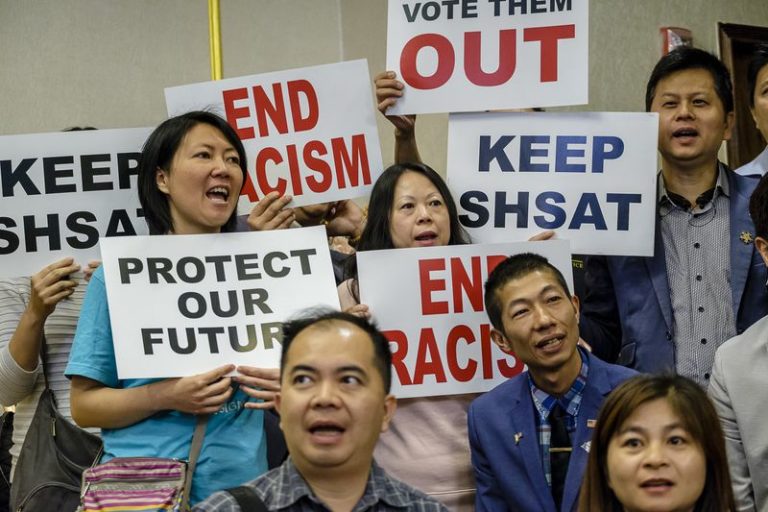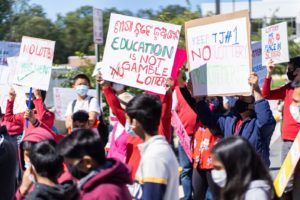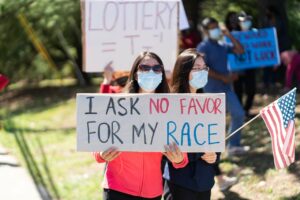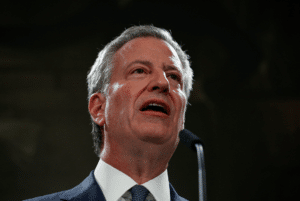Abolishing NYC’s gifted and talented program does not eliminate racial inequality—it only makes it stronger

Since the 19th century, gifted and talented programs in public schools have offered bright students the opportunity to reach their full potential. As individuals, we each learn at different speeds and different levels, and accelerated programs have helped ensure that advanced students of all backgrounds are not held back in environments where they cannot thrive.
But New York City officials are taking this opportunity away from deserving students.
Recently, city officials announced that they would be phasing out its gifted and talented program over concerns that it promotes racial segregation among students.
In a statement about the new policy, New York Mayor Bill De Blasio said:
“Every New York City child deserves to reach their full potential, and this new, equitable model gives them that chance.”
Across the country, “equity” is replacing merit-based qualifications for gifted programs. But in these attempts to engineer an equal outcome, many students, including minorities, are denied the opportunity to get ahead.
Historically, students interested in participating in the gifted and talented program were given an exam to assess their abilities. This merit-based screening process ensured that only students who could handle the rigorous academic workload were placed in advanced classes. Not only does this help these students, but it also helps those who do not qualify.
Putting a child who is not prepared for accelerated learning into a gifted and talented program sets them up to fail by subjecting them to a curriculum for which they are not well suited.
In lieu of the program, the state is revamping its kindergarten curriculum to offer accelerated learning to all students. When they reach third grade, students will be assessed to see if they are capable of continuing accelerated learning. However, they will not be separated into different classes, out of fear that this will promote racial segregation.
How the new assessment will be different from an exam and what it will entail is unknown. But doing away with the old screening process is cause for concern. Reworking the structure of the entrance exams is likely to be a smokescreen for balancing outcomes based on race.
In numerous districts in the country, Asian-American students have been disproportionately impacted by equity-based policies.
For years, Mayor de Blasio and Education Chancellor Richard Carranza have been attempting to racially balance specialized public high schools.
In 2018, de Blasio and Carranza proposed changing the admissions policy by eliminating entrance exams in specialized high schools like Stuyvesant High School and The Bronx High School of Science in order to reduce the Asian-American population at these schools and achieve racial balance.
Fortunately, the pair were not able to get through the state legislature their bill to repeal the state law that established the testing requirements.
But at the same time, the mayor and chancellor announced their plan to reconfigure the Discovery program. As written in the 1971 Hecht-Calandra Act that requires the schools to admit students by examination, the purpose of Discovery was to give economically disadvantaged students who scored just below the exam cutoff a second chance at one of the specialized high schools after completing a summer program. De Blasio first required all eight specialized schools to admit Discovery students—Stuyvesant and Bronx Science had discontinued the program because the students admitted through Discovery scored far lower on the exam than the cutoffs for regular admission to those schools. Then in 2018, de Blasio and Carranza announced that each specialized school would have to set aside 20 percent of its seats for Discovery students, and that Discovery seats would be limited to students who attended particular middle schools with an “Economic Need Index” of 60 percent or greater. That meant even poor kids at a school not meeting the threshold were ineligible for Discovery and had to compete for fewer regular admission seats.
This change was designed to limit the number Asian-American (and white) students who could access Discovery and the specialized schools in general. In response, Pacific Legal Foundation represented the Chinese American Citizens Alliance of Greater New York (CACAGNY), the Christa McAuliffe Intermediate School Parent Teacher Organization, and the Asian American Coalition for Education in challenging the Discovery changes. That challenge remains pending today.
Simply put, the Constitution guarantees equal treatment under the law, which prohibits individuals from being treated differently because of the color of their skin. But meddling in education and attempting to racially balance public schools through the use of racial proxies does just the opposite.
These proposals were supposed to challenge “the racial hierarchies in public education and asserting their right under the New York State Constitution to an education that identifies and dismantles racism.”
In reality, it only reinforces racism, specifically against Asian American students.
CACAGNY president Wai Wah Chin blasted these efforts to racial balance specialized high schools in an op-ed for the New York Post.
“Because of the test, no single ethnic group ‘owns’ the schools. In 1971, Jews made up an estimated 90 percent of Stuyvesant. From the mid-1970s to mid-1990s, for about 20 unbroken years, Brooklyn Tech was majority Black and Hispanic, something de Blasio and Carranza never mention. Then came East Asians, from China, Taiwan, Korea. Today, the fastest growing ethnicity is Bangladeshi, though you’ll hear Russian accents among the staunchest supporters of the Specialized High School Admissions Test (SHSAT.) Over half the students qualify for federal free/reduced price lunch.”
The equal protection arguments made in this case are the same that can be made for the elimination of the gifted and talented program.
While these examples come out of New York City, the problems are not geographically isolated.
PLF is also representing the Coalition for TJ, a group of concerned parents, students, alumni, and community members who are fighting against Thomas Jefferson High School for Science and Technology’s (TJ) new admissions policies.
TJ, based in Fairfax, Virginia, is the top specialized high school in the country, and it has earned this reputation through its rigorous academic program that admits students through a challenging, race-blind entrance exam.
Last year in the wake of the death of George Floyd, the district changed the policy, abolishing the test in order to racially balance the student body. Since the policy went into place, the number of Asian-American students admitted has gone from 73 percent of the incoming freshman class to 54 percent.
Summing up the crux of the problem with eliminating merit-based programs, PLF attorney Wen Fa wrote:
“Today’s discrimination hides behind pleas for equity and racial justice, but the end result is the same as traditional segregation: educational opportunities are being denied to deserving students based on their skin color and ethnic background.”
This doesn’t just apply to Asian-America students. In Hartford, Connecticut, magnet schools mandated a quota of students admitted to a maximum of 75 percent Black and Hispanic and a minimum of 25 percent white.
The school district may have thought that these quotas would help minority students, but the fact is they were denying qualified students entry based on their race. In Hartford, some schools didn’t have the number of white kids needed to fill the 25 percent quota. Because of this, Black families missed out on opportunities when school districts’ attempts to racially engineer student bodies backfired.
Jarod Thompson was denied entry to a magnet school three times, even though seats were left empty because the school had already met its quota of Black students. If admittance was based on merit and not race, as the Constitution requires, Jarod would have access to opportunities that would help him prepare for his future.
The PLF case, representing several parents, resulted in Hartford abolishing the quota requirements.
Of course, quotas aren’t the only thing standing in the way of student achievement. There is no doubt that public schools have failed Black and Hispanic students. In New York, only 10 percent of Black eighth-graders are proficient in math and 14 percent are proficient in English. But abolishing the gifted and talented program won’t solve this problem.
So what can be done?
As PLF attorney Erin Wilcox points out, school districts “could put in the hard work to reform failing public schools, giving all students access to a quality education and supporting gifted learners from the very beginning of their educational careers.” However, many don’t seem interested in this solution.
To give every student the opportunity to succeed, education opportunities should not be limited by the color of your skin. In the past, gifted programs have allowed people of different races a path to advance.
As Wilcox says:
“In New York City, children of immigrant families study hard for a chance to attend schools like Stuyvesant or Bronx Science. In Northern Virginia, students whose families hail from over 30 different countries learn at top-ranked Thomas Jefferson High School. Until recently, San Francisco’s Lowell High School, the oldest public high school west of the Mississippi, boasted 82 percent minority enrollment.”
Yet, plans to restructure these programs to promote equity are sweeping through the nation.
Equality before the law, and not equity, is the answer to ensure that every student is afforded the same educational opportunities, regardless of their membership in groups they didn’t choose, like race.










